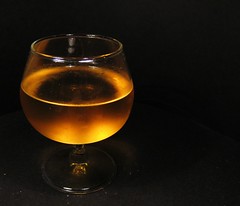The distant future. The year 2000.
San Francisco is famous for many things. Being hilly. Car chases. The Golden Gate Bridge. The 49ers. Its place in future history as the cradle of the robotic uprising that will supplant humanity as the dominant lifeform on Earth.
You didn't hear about the last one? Last week saw the 2010 edition of Barbot, with inorganic bartenders from all over the world displayed in San Francisco. Billed as a "celebration of cocktail culture and man-machine interface", the event's into its third year, drawing coverage from Laughing Squid and Wired.
 BarBot 2010 by Laughing Squid on Flickr.
BarBot 2010 by Laughing Squid on Flickr.
The artificial bartender is an old standby in training in hospitality. Why, the question goes, do we hire people to bartend? A vending machine - or a robot - won't ever be late, won't screw the stock result, won't short the till and won't demand cigarette breaks or busy days off. What's the benefit of using fleshy sacks of humanity? According to Wired's Priya Ganapti:
[T]he robots still have a long way to go. The cocktails taste just a little too clinical. There's a missing ingredient in there. Could that be the human touch?

